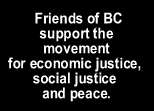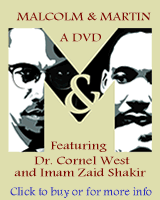
|
||||||||||||||||||||||
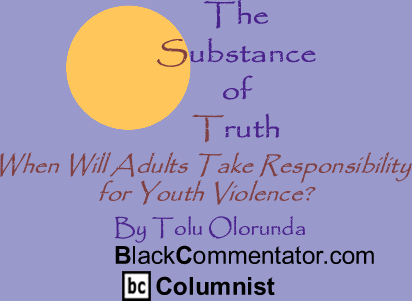
|
|
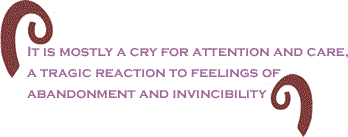 |
|
A
couple of weeks back, Attorney General Eric Holder, responding
to the horrific caught-on-tape death of 16-year-old Chicagoan
Derrion Albert, hoped it would serve as a “stark wake-up call
to a reality that can be easy for too many to ignore as they go
about their daily lives.” What I wished the Attorney General would also say, which he failed to, was that as much as it is a national - and really international - “problem,” it’s also an adult problem. Often, when Youth channel their rage and righteous indignation unproductively, it is mostly a cry for attention and care, a tragic reaction to feelings of abandonment and invincibility. For as James Baldwin once cogently wrote, “Every child’s sense of himself is terrifyingly fragile. He is really at the mercy of his elders, and when he finds himself totally at the mercy of his peers, who know as little about themselves as he, it is because his peers’ elders have abandoned them. … But children, I submit, cannot be fooled.” [1] Children - and Youth - cannot be fooled! The death of Derrion Albert, sad as it was, might just be the catalyst needed to turn a sharper gaze upon the vulnerable conditions youth of color are subdued by - all the days of their lives. If, however, we resort to the reactionary, repetitive recoil of rebuking young folk for their recalcitrance, that brutal scene, captured on camera, would be looped over and over again - to the pain and anguish of mothers like Anjanette Albert, Donna Hood, and Yeimi Tirado. Rev. Father Michael Pfleger, senior pastor of St. Sabina, located in the South Side of Chicago, called for a fast earlier this year, and flew the national flag above his church upside down, to raise consciousness about the horrifically high rate of teen shootings and deaths Chicago had produced in those few months alone. For this, he was attacked and protested. Those who remonstrated against him claimed to be just as sympathetic to the crisis at-hand, but, on the other hand, felt disrespected. Rev. Pfleger, to hear them tell it, was merely exploiting this pet-project to generate some controversy. The scores of lives lost in just a few months still hadn’t constituted adequately “a signal of dire distress,” it seemed they were trying to say. But, for so long, such has been the narrative promulgated by too many adults. Rather than engaging substantively in constructive discussions about the future of youth, and the immediate invalidation their realities pose to any remote possibility of democracy, some adults have instead invoked personal childhood contrasts to defend their docility. In short, blaming young folk has gained ground as a legitimate response to undeniable suffering.
Thankfully, no group is monolithic. So
that, while some elderly folk felt it necessary to enlist the
National Guard or other State-sponsored apparatus to put pressure
on the wrongdoers, others, like Rev. Marcia Dyson, understood
that an arms-race in the ghetto - between youth of color
and the police (who are already
authorized to carry M-4 carbines, anyway) - would only exacerbate
the casualties - rather than provide much-needed assuagement.
Earlier this year, she asked that the Black Community join
her in fasting
and praying for peace concerning the raging violence in Of course, it’s never just about youth-on-youth activities. What the grave truth many fail to admit is that the society of which we are a part has not only made youth of low priority, but in many instances, of no priority. Youth are, often, perceived - treated - as nothing but a problem, a hassle, a nuisance to the freedom adults worked their whole lives to attain. This line-of-thinking is at work in the mind of the teenage new mother who dumps her daughter in the trash can. [3] That same mother, who we are quick to vilify, quick to demonize, quick to ostracize, is but a mere reflection of the society that now turns its back on her. She is very perceptive. She understands that the same society which has built billion dollar prisons - money which could be put into much, much, much better use (i.e. education, shelter, employment opportunities, social programs, etc.) - to house her, and those who look, act, think like her, is in no moral position to wag its finger in her face, or shake its head in disappointment. She can also see young men around her whose lives have been handed over to the State - custodian of the futures of many (once) young, promising souls. Young people aren’t stupid. They’ve witnessed, in little over three decades, a complete disregard for the high esteem society once treated its young with. What is soullessness but the inability of a people to make the connection between children and the future? It seems some have deluded themselves into thinking mortality isn’t real - or inevitable: I’m gonna live forever/ I’m gonna learn how to fly!
The problem is society does not want to be bankrupt (too late!) - and it sees Youth as a very real, but containable, danger to its financial stability. Containment is easy. Society knows this. When you have a problem, the speediest way to get rid of it is - to get rid of it. In society’s eyes, youth are the - not just a - problem. And the increases in prison-funding, the increases in militarized school complexes, the increases in arbitrary police power, are all indicators of the need to get rid - as fast as possible! - of this ever growing problem: Young people. Giroux expands more on this phenomenon in Youth:
A couple of weeks back, video surfaced of a 15-year-old Black boy, Marshawn Pitts, recounting an experience that left him scars, bruises, fractures, and a broken nose. Pitts, a special needs student, was walking to his locker when a police officer began verbally abusing him, then flung him across the hall, smashed his face into the floor, and made punching bags of his cheeks. His crime? An untucked shirt. It would sound unbelievable to some and made up to others, but, luckily for Pitts, the attack was caught on tape.
Pitts’ story, regrettably, is but a mere microcosm of the reality most poor Youth of color currently live under the shadow of. Being smashed into walls, cussed out, teased, mocked, and attacked at school is, in many ways, for a number of students, an inextricable part of the educational experience. The only difference, now, is that unlike the days of old when it was one’s classmates exhibiting such demented displays of moral ineptitude, police officers, increasingly, have begun adopting similar measures to contain the threat factor they believe students - no matter how young or unintimidating - pose to their wellbeing (and ego). Of course, the parallel hardly exists. Unlike your classmate who could be reported to the principal’s office and, soon after, corrected, reprimanded, or, as last resort, suspended, the men in blue are inordinately unaccountable in school settings. And the litany of reports detailing hostile confrontations between teachers, parents, and administrators, with the paid security personnel - due to allegations of misconduct - show just why any militarized measures to monitor or manage kids’ conducts often leads to even more deleterious consequences - for all involved. In that sense, the Prison culture, the inescapable future for many Youth - of all stripes, color, and creed - must be understood for what it is - a cowardly construction to dispose of those members of society we have no use for anymore.
I.F. Stone had it right: “[I]f there were no handful of the desperate in the ghetto and on the campus to make threats and hurl rocks, who in our smug and complacent established order would begin to listen and to move a little?” [6] [1] Baldwin, James. Collected
Essays. [2] West, Cornel. Race
Matters. [3] Allusion to: Tupac Shakur, “Brenda’s Got a Baby,” 2Pacalypse Now, 1991. (A powerfully-provoking song from a much-misunderstood soul.) [4] Giroux, Henry. Youth
in a Suspect Society: Democracy or Disposability? [5] Ibid. Youth, p. 72. [6] Stone, I.F. “Who Are The Real Kooks In Our Society?” I.F. Stone’s Bi-Weekly 9 March 1970. BlackCommentator.com Columnist, Tolu Olorunda, is a Nigerian native and cultural critic. Click here to reach Mr. Olorunda. |
|
|
|
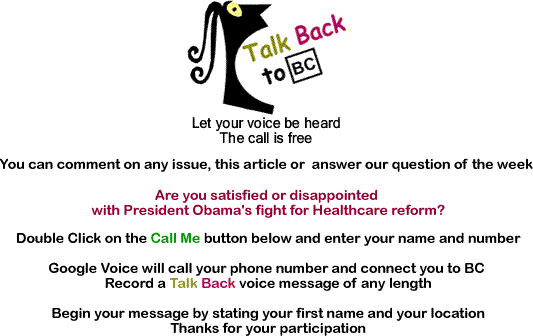 |
|
Any BlackCommentator.com article may be re-printed so long as it is re-printed in its entirety and full credit given to the author and www.BlackCommentator.com. If the re-print is on the Internet we additionally request a link back to the original piece on our Website. Your comments are always welcome. eMail re-print notice
If you send us an eMail message we may publish all or part of it, unless you tell us it is not for publication. You may also request that we withhold your name. Thank you very much for your readership. |
|
| |
|
| October
22 , 2009 Issue 347 |
|
| Executive Editor: Bill Fletcher, Jr. |
| Managing Editor: Nancy Littlefield |
| Publisher: Peter Gamble |
| Est. April 5, 2002 |
Printer Friendly Version
in resizeable plain
text format or pdf
format. |
 |

|
| |
| |































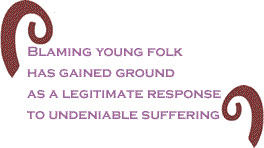 In
his seminal text,
In
his seminal text,  As
Henry Giroux writes in his powerful new text,
As
Henry Giroux writes in his powerful new text, 
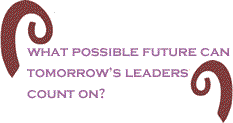 If
this, indeed, is all society has to offer its young, what possible
future can tomorrow’s leaders count on?
If
this, indeed, is all society has to offer its young, what possible
future can tomorrow’s leaders count on?




